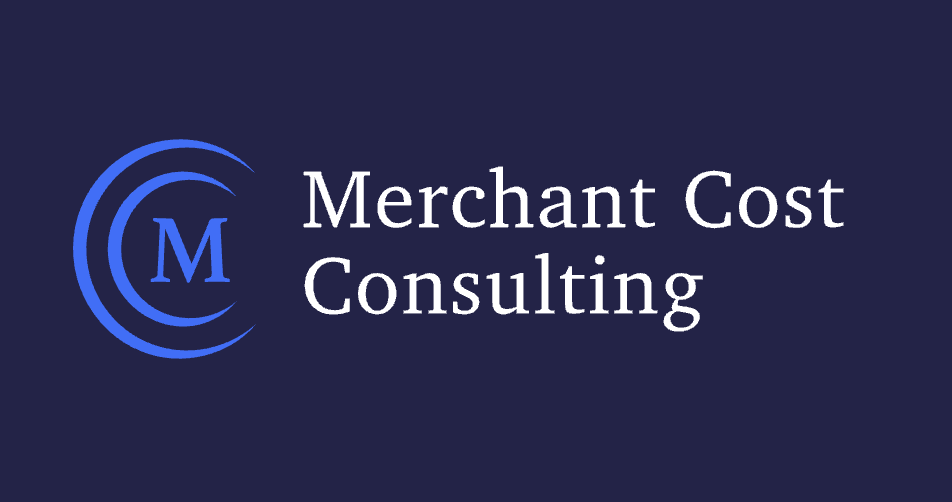How much do businesses typically pay for credit card processing? We break down average processing fees and everything else you need to know.
Our content reflects the editorial opinions of our experts. While our site makes money through
referral partnerships, we only partner with companies that meet our standards for quality, as outlined in our independent
rating and scoring system.
Credit card processing fees can be a big expense for your business — and many merchants end up paying more than they should because they don’t fully understand how the fees work.
Knowing the industry averages for common fees helps you avoid overpaying and makes it easier to compare credit card processors for your business. In this article, we’ll break down what processing fees are, how they’re calculated, and what you can expect to pay.
What Are Credit Card Processing Fees?
Credit card processing fees are the charges a business pays each time a customer uses a credit or debit card.
Most of the fee goes to the customer’s issuing bank — this is called the interchange fee. Smaller portions go to the credit card network (assessment fees) and the business’s payment processor (processor markup).
What Are The Average Credit Card Fees For Small Businesses?
Credit card processing fees typically range from 1.5% to 3.5% plus $0.05 to $0.10 per transaction for U.S. businesses, depending on factors like card type, transaction method, and industry.
The table below shows the typical ranges of interchange fees and network assessment fees for the major credit card brands. These averages can help you gauge what to expect when processing payments.
| Card Network |
Interchange Fee Range |
Assessment Fee |
Notes |
| Visa |
1.15% + $0.05 to 2.60% + $0.10 |
0.14% |
Fees go to issuing bank & network |
| Mastercard |
1.45% + $0.05 to 2.90% + $0.10 |
0.1375% |
Varies by card type & transaction size |
| American Express |
1.80% + $0.10 to 3.25% + $0.10 |
0.15% |
Amex acts as both issuer & network |
| Discover |
1.55% + $0.05 to 2.45% + $0.10 |
0.13% |
Varies by merchant & card type |
It’s important to note that these fees do not include processor markups, which vary by provider and can significantly impact your total processing costs.
Types Of Fees
Credit card fees can be broken into three categories: interchange fees, assessments, and processor markup. Here’s a breakdown:
Interchange Fees
Interchange fees go to the card-issuing bank and make up the largest portion of your processing costs. The exact fee depends on several factors:
- Credit vs. Debit: Debit transactions are less risky and usually cheaper; credit cards involve a short-term loan from the issuing bank.
- Card-Present vs. Card-Not-Present: In-person transactions are lower risk; online transactions cost more due to higher fraud risk.
- Card Type: Rewards cards are more expensive because the bank covers perks like cashback or points.
- Transaction Size: Larger transactions are riskier and generally incur higher fees.
- Merchant Category Code (MCC): Different business types may be categorized differently, affecting the rate.
Assessment Fees
Assessment fees are small charges paid directly to the card networks (Visa, Mastercard, Amex, Discover). They usually range from 0.13% to 0.15% per transaction and are often bundled with interchange fees by your processor.
For more detailed information on assessment fees and other charges imposed by credit card networks, check out our complete guide to card brand fees.
Processor Markup
Markup fees are what your processor keeps for providing the payment service. There are two types of markup fees:
- Wholesale fees are fixed and go to banks and card networks.
- Markup fees aren’t fixed, stay with the processor, and can often be negotiated.
All the factors identified above (card type, transaction size, Merchant Category Code, etc.) will impact how much you’ll pay in wholesale fees for any transaction.
Here’s how wholesale fees and processor markup appear in different pricing models.
Sample Quoted Payment Processing Rates
| Pricing Model |
Sample Rate |
Wholesale Rate Included? |
| Interchange-Plus (Cost-Plus) |
|
No |
| Membership (Subscription) |
- INT + $0.10 (+ $99/month)
|
No |
| Tiered |
- Qualified: 1.79% + $0.10
- Mid-Qualified: 2.19% + $0.15
- Non-Qualified: 2.99% + $0.20
|
Yes |
| Flat-Rate |
- 2.75% In-Person
- 2.90% Online
|
Yes |
Fee Plan Comparison
Credit card processors typically use one of two pricing approaches: pass-through or blended. Here’s a quick breakdown:
Pass-Through Approach
Pass-through pricing is used in interchange-plus and membership plans. Interchange fees and the processor’s markup are listed separately, so you can see exactly what the processor keeps.
This approach works well for established businesses with steady processing volume.
Pros
- Clear transparency on the processor’s markup
- Often cheaper for mid-sized and larger businesses
Cons
- Costs vary per transaction based on interchange rates
- Harder to estimate total monthly processing costs in advance
Blended Approach
Blended pricing appears in flat-rate and tiered plans. Here, interchange fees and markup are combined into a single rate, which can make it harder to see exactly how much goes to the bank versus the processor.
This model can be beneficial for small or new businesses, especially if there are no recurring account fees.
Pros
- Processing costs are more predictable
- Simple rate structure is easier for merchants to understand
Cons
- Lack of transparency regarding processor markup
- Generally more expensive on a per-transaction basis (particularly tiered pricing)
Pricing Models
| Pricing Model |
How It Works |
Best For |
Pros |
Cons |
| Interchange-Plus |
Pay interchange + fixed markup per transaction |
Mid-to-large businesses |
Transparent, lower cost |
Complex, extra fees possible |
| Membership |
Flat monthly fee + small per-transaction fee |
High-volume businesses |
Predictable, simple |
High monthly cost |
| Flat-Rate |
One fixed rate per transaction |
Startups/small businesses |
Simple, predictable |
Higher rates |
| Tiered |
Transactions split into 3 tiers with different rates |
Rarely recommended |
Easy to understand |
Opaque, often costly |
Credit card processors have several ways to charge for processing transactions. Nearly all plans today fall into one of four categories: interchange-plus, subscription, flat-rate, or tiered. Here’s a breakdown of each:
Interchange-Plus Pricing
With interchange-plus pricing, your provider adds a fixed markup to every transaction. You pay the interchange and assessment fees plus that markup. The markup is the same for every transaction, while processing costs vary depending on the applicable interchange fee.
This plan is highly transparent, showing exactly how much the processor keeps, and it’s usually cheaper than flat-rate or tiered plans. Additional account fees can increase costs, so interchange-plus is best for established businesses processing at least $5,000/month.
Membership Pricing
Membership pricing (or subscription pricing) is a variation of interchange-plus. Instead of a percentage-based markup, you pay a flat monthly fee—usually around $100 or more—plus a small per-transaction authorization fee (typically $0.05–$0.30).
This plan reduces extra fees, but the monthly cost makes it suitable only for large, established businesses with high, stable monthly processing volumes.
Flat-Rate Pricing
Flat-rate pricing charges the same rate for nearly every transaction (usually separate rates for in-person vs. card-not-present transactions). It simplifies processing costs and avoids surprise fees.
While predictable, rates are generally higher to cover interchange costs and ensure profits for the processor. Flat-rate plans usually don’t have monthly or annual account fees, making them a good choice for startups or small businesses with low or irregular monthly volumes.
Tiered Pricing
Tiered pricing is a variation of flat-rate pricing that sorts transactions into qualified, mid-qualified, and non-qualified tiers. Each tier has a fixed rate, but merchants rarely know which tier a transaction will fall into. Rewards cards, delayed submissions, and other factors can push transactions into the non-qualified tier, where rates can be two to three times higher than the qualified tier.
Tiered pricing is common among traditional providers, but it obscures costs and usually leads to higher processing fees. For merchants, there are no real advantages — avoid it if possible.
How Much Should You Pay In Fees As A Small Business?
To see how much you’re really paying, calculate your effective rate: your total processing costs (including all fees) divided by your total sales, expressed as a percentage.
If you’re already processing payments, you can figure this out by reviewing your recent statements.
For a typical, low-risk business, your effective rate should be around 3 to 4%. High-risk businesses may pay much more — sometimes nearly twice that of a similar low-risk business.
How To Lower Or Offset Your Fees
Finding a low-cost processor is just one way to cut fees. You can also:
- Offer a cash discount: Encourage customers to pay with cash instead of a card.
- Set a minimum card purchase: Only accept cards for transactions above a certain amount.
These strategies can help offset processing costs without hurting your business. For more tips, check out our full guide on lowering credit card processing fees.
 Matt has been helping small businesses make decisions since 2017. He has written reviews and articles across many different channels but specializes in the point of sale, payroll, and small business insurance categories and has been quoted in articles for Fox Business, Forbes, and other publications. Prior to joining Merchant Maverick, Matt was a journalist and editor for 14 years for a pair of weekly newspapers. He is a graduate of the University of Oregon and currently resides in Gladstone, Oregon.
Matt has been helping small businesses make decisions since 2017. He has written reviews and articles across many different channels but specializes in the point of sale, payroll, and small business insurance categories and has been quoted in articles for Fox Business, Forbes, and other publications. Prior to joining Merchant Maverick, Matt was a journalist and editor for 14 years for a pair of weekly newspapers. He is a graduate of the University of Oregon and currently resides in Gladstone, Oregon.A fixed rate is generally best when you are a small to mid-sized business because the fees are predictable. However, larger sellers may benefit from the lower rates of interchange plus pricing.
Based on your business size and processing habits, here’s how to get even more value:
- Small or seasonal businesses: Look for a highly-rated processor with flat-rate pricing.
- Medium-sized businesses with stable volume: Interchange-plus pricing is usually the most cost-effective.
- Large, established businesses: Membership/subscription pricing can save you the most.
- Avoid long-term contracts with early termination fees (ETFs).
- Never lease processing equipment.
- Read your merchant agreement carefully to fully understand fees.
- Consider paying a bit more for a provider with excellent customer service — it’s often worth it.
The Final Word On Credit Card Processing Costs
There’s no single “best” or “cheapest” processor for every business. The right choice depends on your size, processing volume, and priorities. Taking the time to analyze your sales data and compare options will pay off in long-term savings and smoother, more predictable credit card processing.













